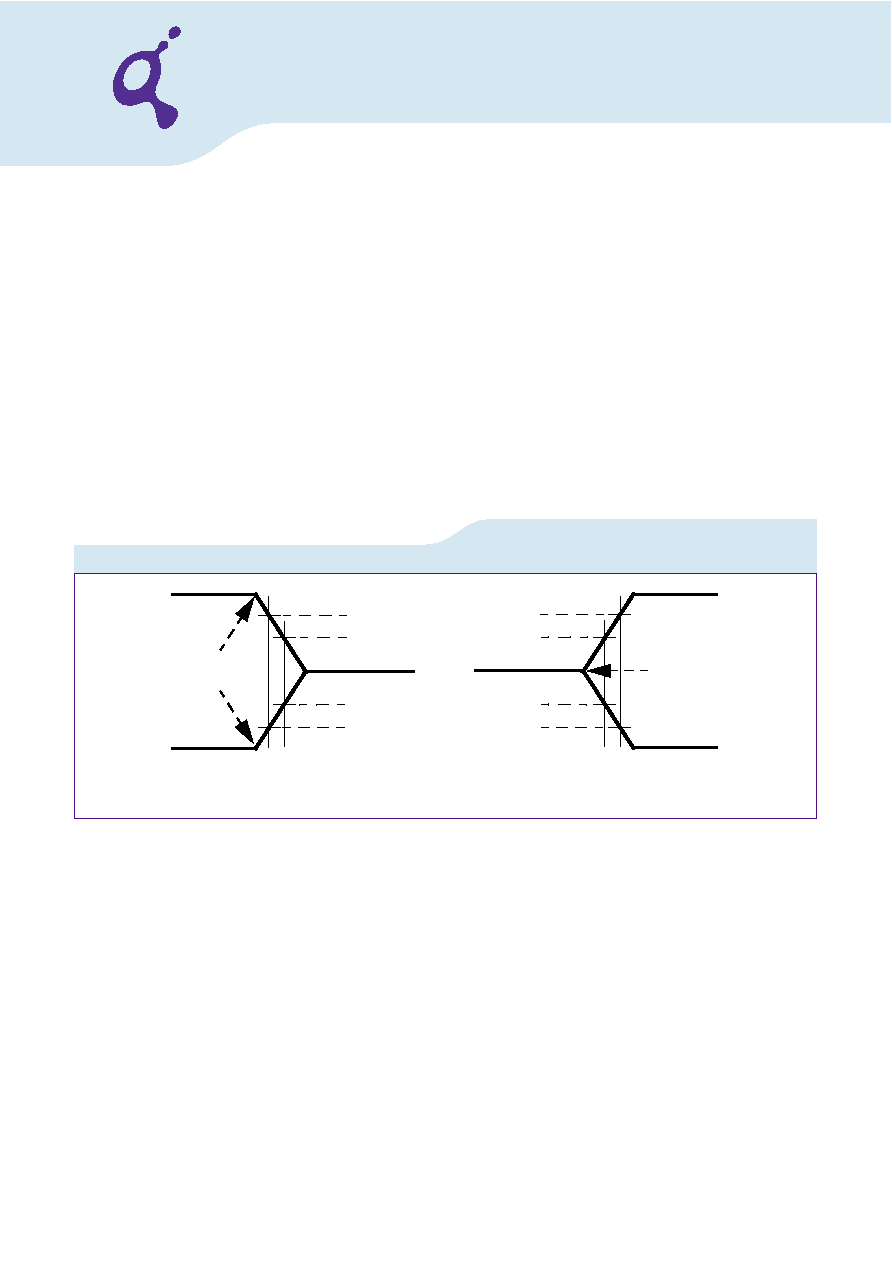- 您現(xiàn)在的位置:買賣IC網(wǎng) > PDF目錄224000 > HYS72T128000EU-2.5-C2 (QIMONDA AG) 128M X 72 DDR DRAM MODULE, 0.4 ns, DMA240 PDF資料下載
參數(shù)資料
| 型號: | HYS72T128000EU-2.5-C2 |
| 廠商: | QIMONDA AG |
| 元件分類: | DRAM |
| 英文描述: | 128M X 72 DDR DRAM MODULE, 0.4 ns, DMA240 |
| 封裝: | GREEN, UDIMM-240 |
| 文件頁數(shù): | 16/59頁 |
| 文件大?。?/td> | 3071K |
| 代理商: | HYS72T128000EU-2.5-C2 |
第1頁第2頁第3頁第4頁第5頁第6頁第7頁第8頁第9頁第10頁第11頁第12頁第13頁第14頁第15頁當(dāng)前第16頁第17頁第18頁第19頁第20頁第21頁第22頁第23頁第24頁第25頁第26頁第27頁第28頁第29頁第30頁第31頁第32頁第33頁第34頁第35頁第36頁第37頁第38頁第39頁第40頁第41頁第42頁第43頁第44頁第45頁第46頁第47頁第48頁第49頁第50頁第51頁第52頁第53頁第54頁第55頁第56頁第57頁第58頁第59頁

HYS[64/72]T[128/256]0x0EU–[19F/1.9/25F/2.5/3S]–C2
Unbuffered DDR2 SDRAM Modules
Internet Data Sheet
Rev. 1.00, 2008-06
23
12032007-I9KE-FFWO
31)
t
RPST end point and tRPRE begin point are not referenced to a specific voltage level but specify when the device output is no longer driving
(
t
RPST), or begins driving (tRPRE). Figure 3 shows a method to calculate these points when the device is no longer driving (tRPST), or begins
driving (
t
RPRE) by measuring the signal at two different voltages. The actual voltage measurement points are not critical as long as the
calculation is consistent.
32) When the device is operated with input clock jitter, this parameter needs to be derated by the actual
t
JIT.PER of the input clock. (output
deratings are relative to the SDRAM input clock.) For example, if the measured jitter into a DDR2–667 SDRAM has
t
JIT.PER.MIN = – 72 ps
and
t
JIT.PER.MAX = + 93 ps, then tRPRE.MIN(DERATED) = tRPRE.MIN + tJIT.PER.MIN = 0.9 x tCK.AVG – 72 ps = + 2178 ps and tRPRE.MAX(DERATED) = tRPRE.MAX
+
t
JIT.PER.MAX = 1.1 x tCK.AVG + 93 ps = + 2843 ps. (Caution on the MIN/MAX usage!).
33) When the device is operated with input clock jitter, this parameter needs to be derated by the actual
t
JIT.DUTY of the input clock. (output
deratings are relative to the SDRAM input clock.) For example, if the measured jitter into a DDR2–667 SDRAM has
t
JIT.DUTY.MIN = – 72 ps
and
t
JIT.DUTY.MAX = + 93 ps, then tRPST.MIN(DERATED) = tRPST.MIN + tJIT.DUTY.MIN = 0.4 x tCK.AVG – 72 ps = + 928 ps and tRPST.MAX(DERATED) = tRPST.MAX
+
t
JIT.DUTY.MAX = 0.6 x tCK.AVG + 93 ps = + 1592 ps. (Caution on the MIN/MAX usage!).
34) For these parameters, the DDR2 SDRAM device is characterized and verified to support
t
nPARAM = RU{tPARAM / tCK.AVG}, which is in clock
cycles, assuming all input clock jitter specifications are satisfied. For example, the device will support
t
nRP = RU{tRP / tCK.AVG}, which is in
clock cycles, if all input clock jitter specifications are met. This means: For DDR2–667 5–5–5, of which
t
RP = 15 ns, the device will support
t
nRP = RU{tRP / tCK.AVG} = 5, i.e. as long as the input clock jitter specifications are met, Precharge command at Tm and Active command at
Tm + 5 is valid even if (Tm + 5 - Tm) is less than 15 ns due to input clock jitter.
35)
t
WTR is at lease two clocks (2 x tCK) independent of operation frequency.
36) This timing parameter is relaxed than Industry Standard
FIGURE 3
Method for Calculating Transitions and Endpoint
相關(guān)PDF資料 |
PDF描述 |
|---|---|
| HYS72T64000EP-3.7-B2 | 64M X 72 DDR DRAM MODULE, DMA240 |
| HZ20-1 | 19.25 V, 0.5 W, SILICON, UNIDIRECTIONAL VOLTAGE REGULATOR DIODE, DO-35 |
| HZ6B1L | 5.65 V, 0.4 W, SILICON, UNIDIRECTIONAL VOLTAGE REGULATOR DIODE, DO-35 |
| HZ9.1CP | 9.65 V, 1 W, SILICON, UNIDIRECTIONAL VOLTAGE REGULATOR DIODE, DO-41 |
| HZB6.8MWA | 6.8 V, 0.2 W, SILICON, UNIDIRECTIONAL VOLTAGE REGULATOR DIODE |
相關(guān)代理商/技術(shù)參數(shù) |
參數(shù)描述 |
|---|---|
| HYS72T128000GR | 制造商:INFINEON 制造商全稱:Infineon Technologies AG 功能描述:DDR2 Registered Memory Modules |
| HYS72T128000GR-37-A | 制造商:INFINEON 制造商全稱:Infineon Technologies AG 功能描述:DDR2 Registered Memory Modules |
| HYS72T128000GR-5-A | 制造商:INFINEON 制造商全稱:Infineon Technologies AG 功能描述:DDR2 Registered Memory Modules |
| HYS72T128000HP | 制造商:QIMONDA 制造商全稱:QIMONDA 功能描述:240-Pin Registered DDR2 SDRAM Modules |
| HYS72T128000HP-2.5-B | 制造商:QIMONDA 制造商全稱:QIMONDA 功能描述:240-Pin Registered DDR2 SDRAM Modules |
發(fā)布緊急采購,3分鐘左右您將得到回復(fù)。